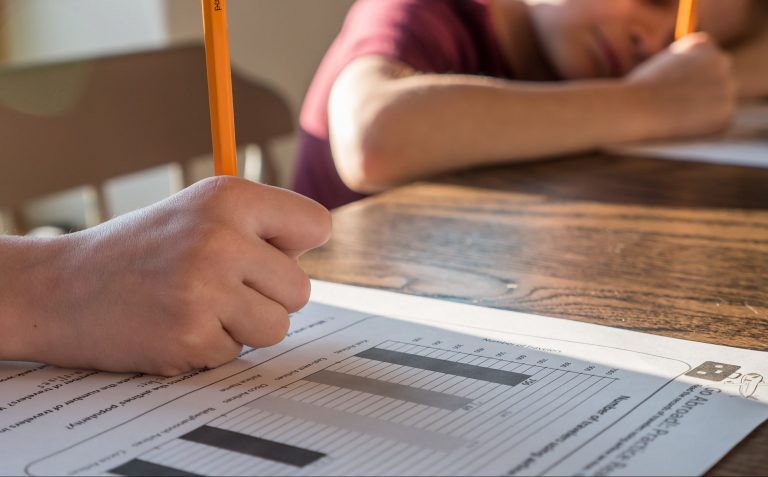The Value of Homework: How to Answer ‘Why Do I Have to Do Homework?’
Written by Dr. Connie Lawrence, Dean of Academics

‘Why do I have to do homework?”
This is a question often asked by students, but not always answered by teachers and parents convincingly!
A teacher’s lesson-plan is developed to create curiosity, explain learning targets, connect to prior knowledge, and give independent practice to engage students in new learning. With approximately 40-minute classes, most of this input goes directly to our working memory – the area of brains where we “think.” This is only the first step in building long-term memory or learning.
Thinking that initial input equals long term knowledge reveals several misunderstandings:
- Moving new information to long-term memory, which has unlimited storage, does not take place during the input process because the learning experience goes to a variety of brain areas (e.g., emotions, senses, efficacy, etc.).
- New learning must be connected to prior learning, if it is going to find a “home” in memory; that requires reflection and making connections.
- Consolidating learning into long-term memory takes place only when it is recalled, and it is optimized with intermittent recall.
Building optimal long-term memory follows a pattern of generative recall, where information can be pulled out with as few cues as possible. This may be vocabulary cards, a blank web, or an outline with only headings. Research indicates that the most popular and unproductive tool for consolidating knowledge is rereading the text or looking over notes. The optimal pattern for generative recall is:
- First is the review at the end of class.
- Second is the review with homework, a few hours later.
- Third is review after two or three days, then weekly and finally reviewing again 2 and 3 months later.
Without this process, learning disintegrates, and we spend time relearning the concept again and again.
“But I learn best when I study right before a test! (i.e., cram!)”
Reviewing what has already been studied just prior to a test can place the material in working memory and be a highly productive strategy. However, research has shown that students who cram unrehearsed learning just before the test may receive a good test grade, but the learning disintegrates at a very high rate and tests given a month later reveal less knowledge retention than those who learned slowly over time. In fact, cramming can harm future learning because the expected growth of prior knowledge upon which new learning is built, is limited by the high rate of forgetting.

To help encourage students to continue learning at home, I prefer the term “learning time” rather than “homework time”. Research indicates the following patterns can effectively enhance learning:
- Establish a study time each school night, whether there is homework or not. (Be prepared to respond to, “I don’t have any homework,” with the consistent reply, “Great! Let’s review or look ahead.”)
- Employ multiple systems of review
- Discuss what is being learned with open-ended questions such as:
- What did you learn that surprised you today? Why?
- What made you curious today?
- What can/should you do with what you know? (Loving What they Learn, Alexander McNeece, 2020)
- Answer end-of-chapter questions.
- Review past quizzes, flashcards, Quizlet, or other apps for vocabulary.
- To improve connections, share what you know about the subject and how you learned it.
- Interleaved practice (i.e., moving between subjects of review after approximately 20 minutes).
- Discuss what is being learned with open-ended questions such as:
- Consistently focus on the learning rather than the grade.


